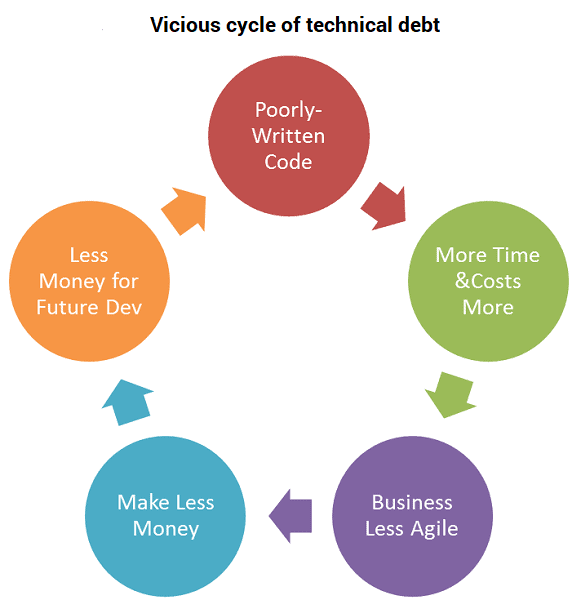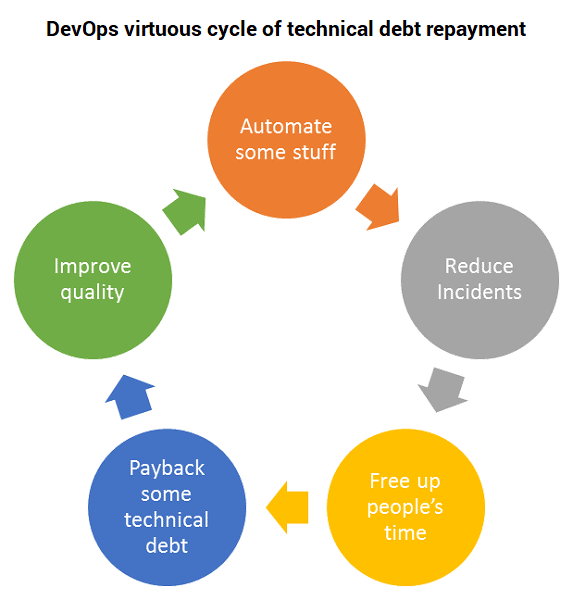How DevOps can automate the repayment of technical debt
One of the common things we find in enterprise organizations looking to move to a DevOps model is high levels of technical debt.
To be more accurate, they are caught in a vicious cycle of technical debt to the point that trying to ship anything in a rapid, agile way is nearly impossible. It’s the Greek debt crisis level of technical debt.
In many cases, layers and layers of process and management have been added into the software development lifecycle in order to try and fix the symptoms of the problem (low quality releases, bugs in production, unstable environments, poor performance, etc) but they are just Band-Aids on the underlying issues.

So how do we get out of this death spiral before the organization can’t compete any more and a disruptive innovator comes along and eats their lunch?
One trend we see is people looking to DevOps automation to try to create the breathing room they need to break out of this vicious cycle, and try to create a virtuous circle instead.

If we can automate some of the routine, error-prone and time-intensive tasks, we can leverage that productivity gain and invest the time freed up into repaying technical debt. As we pay back technical debt we get a higher quality, more stable and more agile application, and we can then reinvest in more automation to start the next cycle of improvement.
We know that this works because we’ve seen it and done it with clients. But it does come with a caveat or two.
Firstly, you need to get commitment from individuals like the Product Owner that the productivity gains will be spent on paying down technical debt and not an endless cycle of feature bloat (that was probably one of the causes of the problem in the first place).
I’m not going to wave a magic wand and say this is easy because it’s not. If you can find the right analogy, however (Technical debt is like walking through quicksand, or Technical debt is like trying to run a marathon with an 80lb backpack on, or Technical debt is what start-ups don’t have…) then you might have a chance.
Secondly, DevOps is more than just A for Automation – it’s Culture-Automation-Lean-Metrics-Sharing (CALMS), so ideally you’d do more than just automate some stuff and begin to start looking at being product-centric, coaching your product owner to understand operational requirements and moving away from the finance-driven project-centric model.
 |
| Are you looking to get started on your DevOps journey? Call DevOpsGroup on 0800 368 7378 or email the team |
 |
| Discover more about applying DevOps processes to the database on the Redgate solutions page |